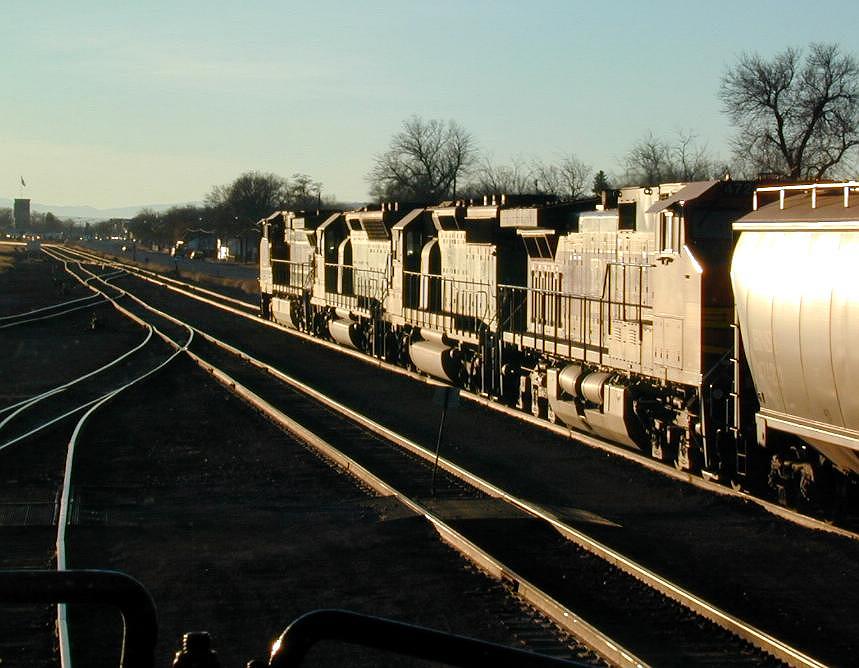
The sun glints off of a grain train getting ready to depart Laurel yard on November 30, 2002 as I drain the air from my brakepipe prior to cutting off and heading to the house. The second unit is not an SD45. It is the BN 7023, an SD40-2 which had an SD45 radiator assembly grafted to it after a derailment.

Two MRL switch engines with their remote control cabooses move along the Top Of The East switching lead at Laurel while I wait to exit the roundhouse lead.
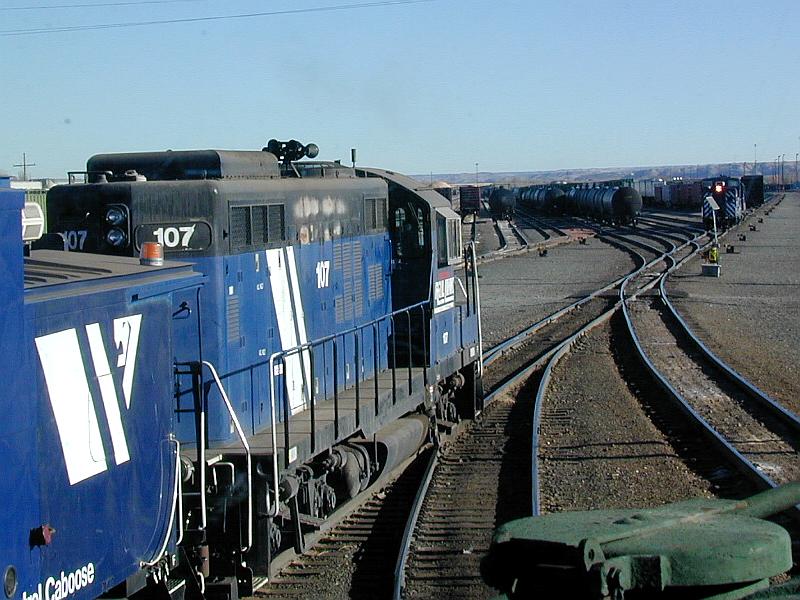
The dual personality SD60M, BNSF 9297, sits at the Sheridan engine terminal while in helper service on December 5, 2002. Note the fuel tender coupled behind the unit. As of January 31, 2003 this unit is still in Sheridan helper service and has acquired a Helper Link unit on the front railings. This is the first BNSF "H1" experimental paint unit. It has slightly different schemes on each side. Note that it has red instead of yellow stripes. On the left half of the nose you can see the dual red stripes and the blue stripes that continue the full length of the unit on its left side. When originally painted in these schemes it had silver trucks to go with the silver fuel tank, air reservoir, and underframe. It appears it has had the trucks swapped out at some time since.
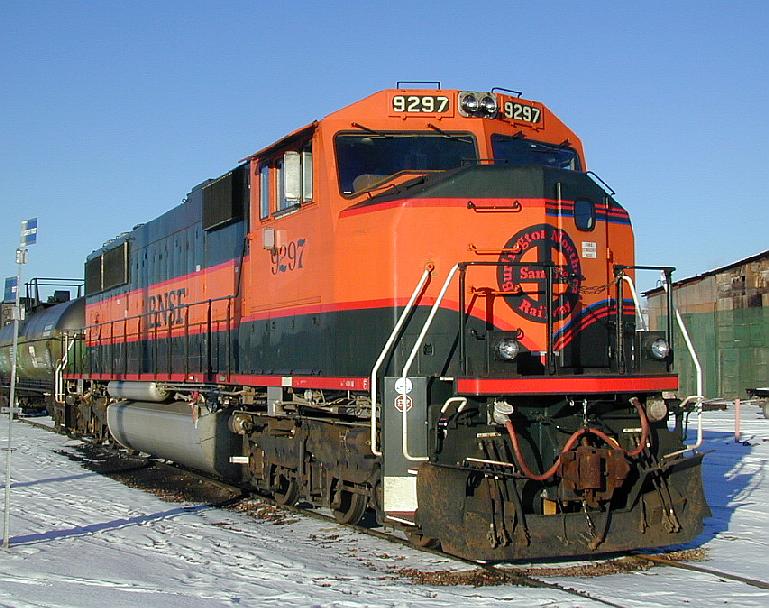
Helper Crash Before midnight on January 25, 2003 a set of Sheridan helpers was called to come rescue me on my V-PTLKCK at Lodge Grass, MT. They got on my point and off we went. Approaching Ranchester the dispatcher called and told our helper crew to swap with the helper crew on the rear of a coal train there. So I stopped my V train next to the coal train's helpers and the helper crews swapped trains. I continued to Sheridan.The coal train departed Ranchester and proceeded up the hill to Parkman. There the helper engineer attempted to uncouple from the coal train on the fly using his Helper Link. The first two attempts failed, the pin would not lift. The third attempt apparently succeeded but the helper engineer, riding the trailing helper unit, did not realize it. The coal train, now over the hill, pulled some distance away from the helper locos. It immediately went into emergency, perhaps from a dynamiter when he set the air. The helper crew, still believing they were coupled to the train, rammed the last car of the stopping coal train. The lead helper unit plowed through the coal hopper folding it like an accordian. Luckily there were no injuries.
Two days later I took these late evening photos from the cab of my SPB coal train. The contents of the destroyed coal car remain along the track at the point of collision. Because of the cut the car had to be dragged west a few hundred feet to where it could be dragged from the track.
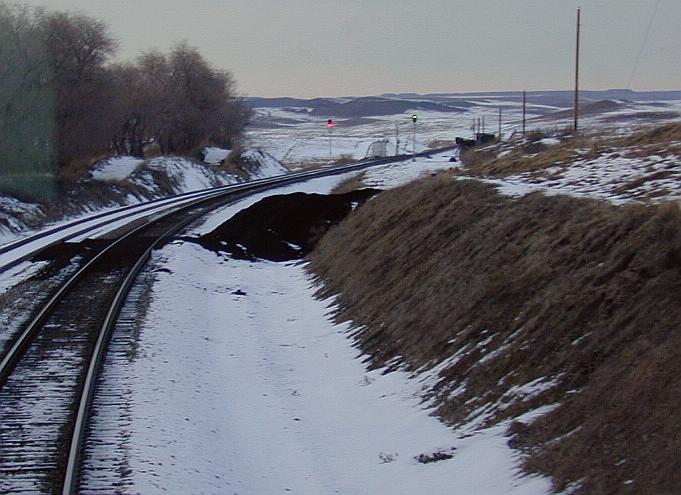
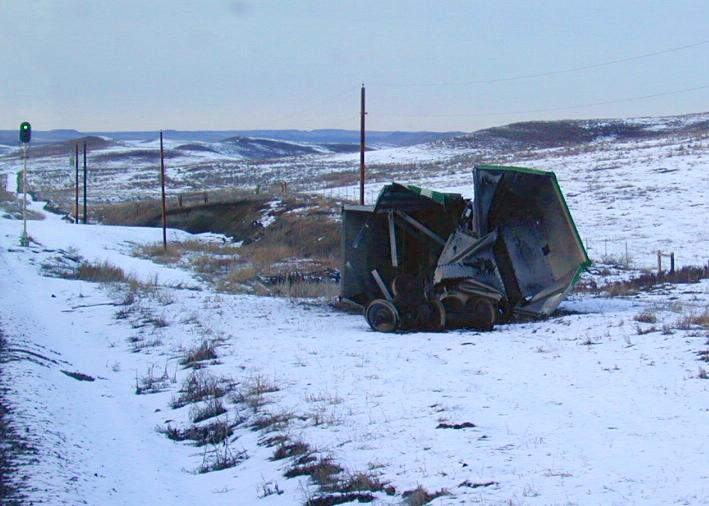
Amazingly the damage to the SD60M helper was minimal. When I saw it at Sheridan, before shipment to Glendive for repair, it was surprisingly intact considering the condition of the coal car it rammed. The ditch light boxes were held onto it by bungy cords. The front railings looked as if they had been sheared off and replaced. The snowplow opening around the drawbar was torn and bent back. But the steps and other parts on the front looked fine.
When I hired out, and when I was regularly working the helpers, we always rode the unit closest to the caboose. The caboose crew was not permitted to ride in a caboose being pushed by helpers so they rode the trailing helper unit.
Then we got rid of the cabooses. That left no one riding the rear unit to observe the track behind the train. One day the inevitable happened, a car derailed midtrain. It was dragged for seven miles cutting up the ties until it piled up on a switch. A new edict came down that helper engineers were to ride the trailing unit when pushing a train so they could keep an eye on the track behind them.
That worked OK for a decade. Then we got helper links. With the engineer riding the trailing unit it is impossible to see when you've uncoupled from the train so you can stop. Again the inevitable occurred. The helper ran into the train. A new edict came down. Helper engineers are now required to ride the unit next to the train they are pushing. And so it goes.
Old Elevator There used to be several wood and tin grain elevators along the railroad I work plus several concrete elevators as well. They are almost all gone. These elevators fed grain to the Sheridan Flouring Mills south of Sheridan. The mill has been out of business since about 1970 and has been converted into a motel called The Mill Inn. Here is the last of the elevators with the "Best Out West" Sheridan Flouring Mills slogan on it. Taken At Wyola, MT from an Oakway SD60 on October 13, 2002.
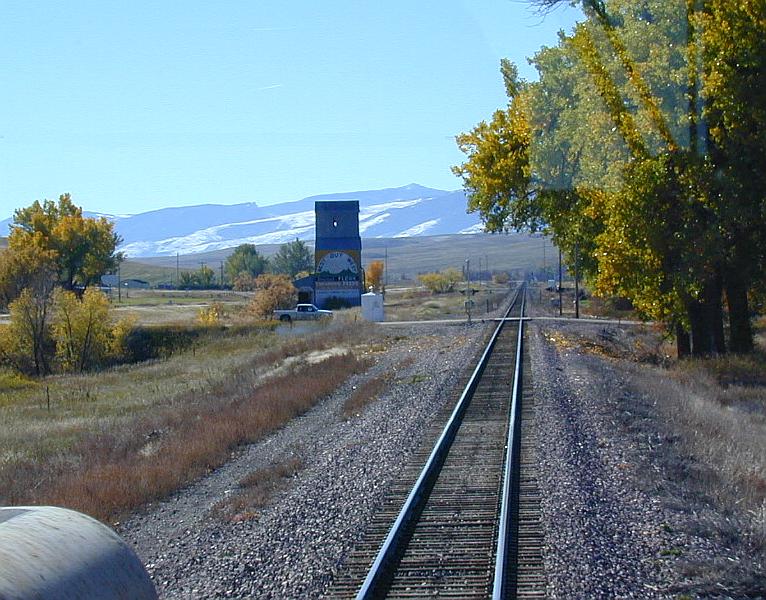
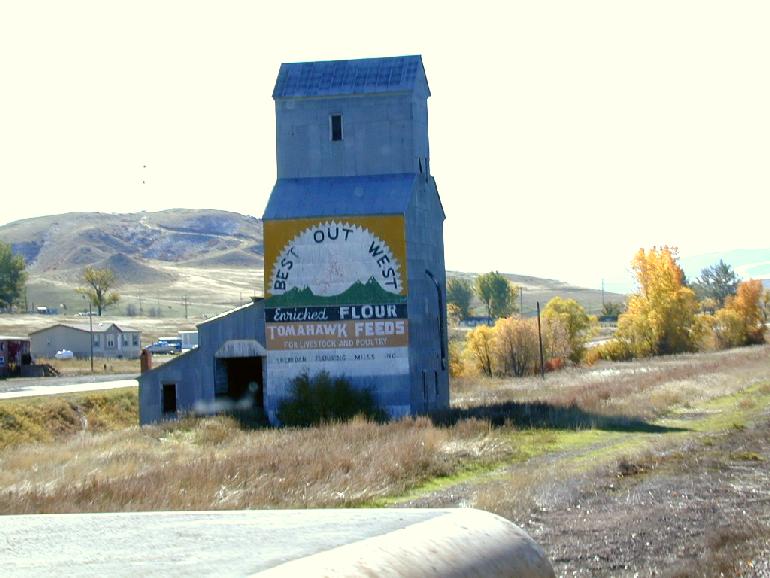
Train of Visitors

Return to Tales index My Home Page E-Mail me Created 01-31-2003
Updated 01-31-2003